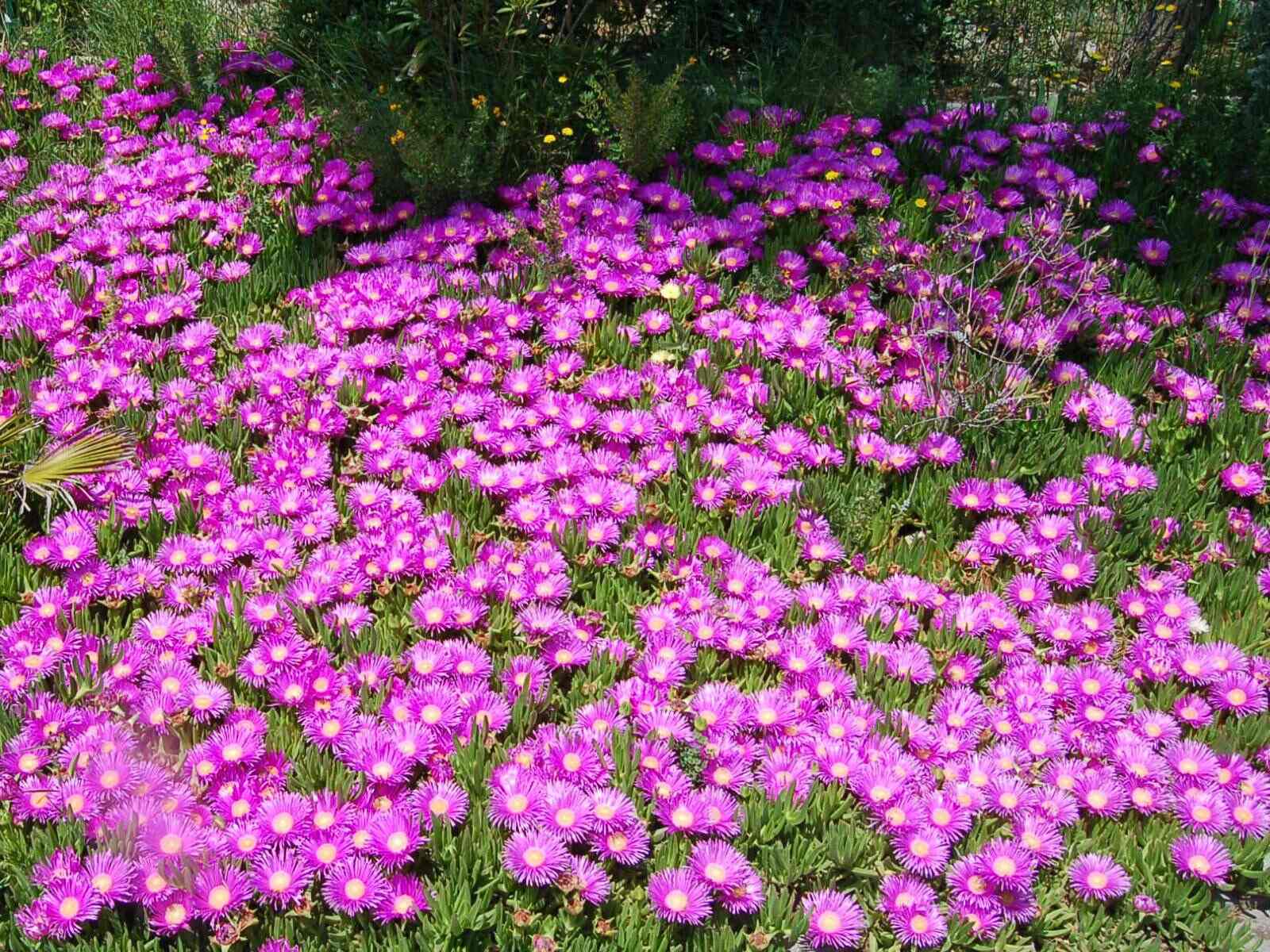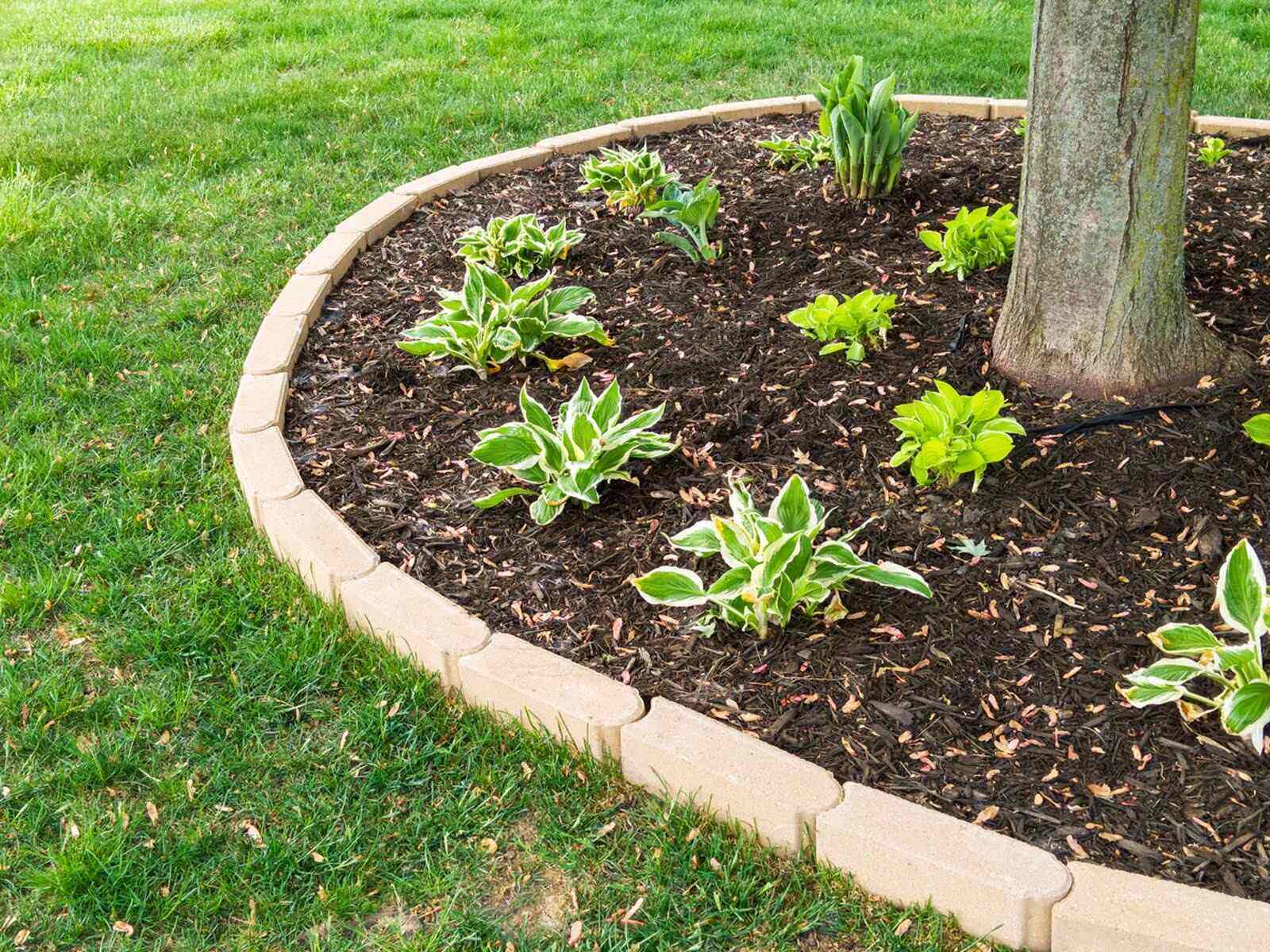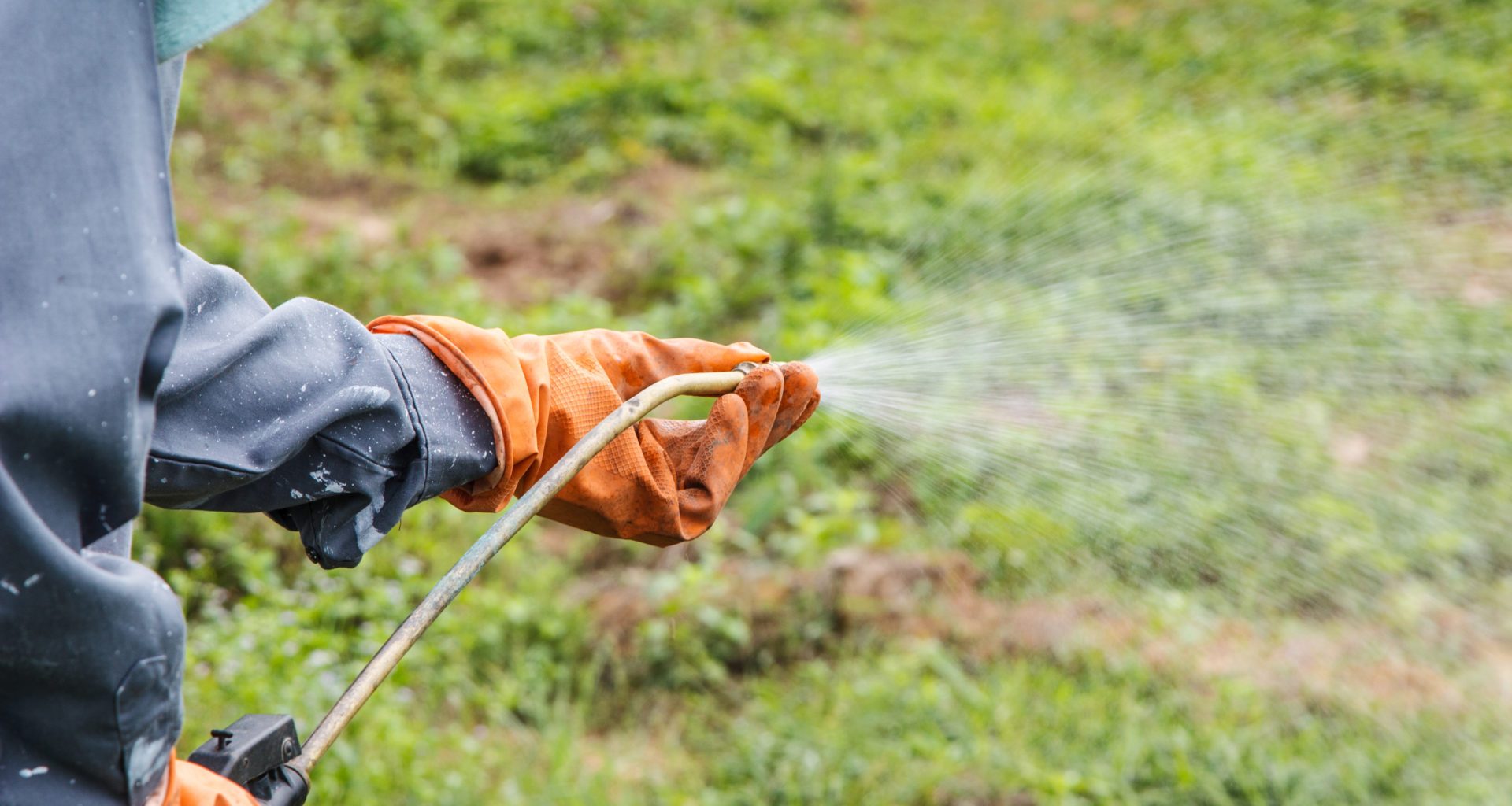Home>Garden Essentials>What Is The Best Ground Cover Killer


Garden Essentials
What Is The Best Ground Cover Killer
Modified: October 21, 2024
Looking for the best garden ground cover killer? Discover effective ways to eliminate unwanted ground cover and reclaim your garden.
(Many of the links in this article redirect to a specific reviewed product. Your purchase of these products through affiliate links helps to generate commission for Storables.com, at no extra cost. Learn more)
Introduction
When it comes to maintaining a beautiful and well-manicured garden, dealing with unwanted ground cover can be a real challenge. Whether it’s stubborn weeds or invasive plants taking over your landscape, finding an effective solution to eliminate them is essential. This is where ground cover killers come into play.
Ground cover killers are products designed to control and eradicate various types of unwanted vegetation. They are available in different forms, including chemical, organic, and natural options. Understanding the different types and their pros and cons can help you make an informed decision and choose the best ground cover killer for your specific needs.
In this article, we will explore the different types of ground cover killers, discuss their advantages and drawbacks, and provide some tips for effectively using them. By the end, you’ll have a clearer understanding of how to tackle unwanted ground cover and restore the beauty of your garden.
Key Takeaways:
- Choose the right ground cover killer based on your needs and preferences, considering factors like the type of vegetation, area of application, effectiveness, safety precautions, and environmental impact.
- Prioritize safety when using ground cover killers by following instructions, using protective gear, avoiding spray drift, keeping children and pets away, and disposing of products properly.
Read more: What Is The Best Ground Cover For A Hillside
Different Types of Ground Cover Killers
There are several types of ground cover killers available on the market, each with its own unique characteristics and methods of action. Let’s take a closer look at the three main types: chemical ground cover killers, organic ground cover killers, and natural ground cover killers.
Chemical Ground Cover Killers
Chemical ground cover killers are typically the most potent and fast-acting options available. They contain synthetic herbicides that are designed to kill unwanted vegetation on contact. These herbicides work by interfering with the plant’s metabolic processes, leading to its eventual death. They are effective in controlling a wide range of weeds and invasive plants.
However, it’s important to exercise caution when using chemical ground cover killers. They can be harmful to the environment and may have residual effects on nearby plants and soil. It is crucial to carefully read and follow the instructions provided by the manufacturer to ensure proper application and safety.
Organic Ground Cover Killers
Organic ground cover killers are derived from natural ingredients and offer a more environmentally friendly alternative to chemical options. These products use natural substances like vinegar, citrus oil, and salt to kill unwanted vegetation. While they may not be as fast-acting as chemical alternatives, they are generally safer to use around pets, children, and beneficial plants.
One advantage of organic ground cover killers is that they can be easily made at home using household ingredients. This DIY approach allows you to have more control over the ingredients and eliminate the need for synthetic chemicals.
Natural Ground Cover Killers
Natural ground cover killers rely on physical methods to eliminate unwanted vegetation. These methods involve manually removing the ground cover, using tools such as weed pullers or hand tools. Natural ground cover killers are labor-intensive but do not require the use of any chemicals or herbicides.
This method is often preferred for smaller areas or in situations where chemical or organic options are not feasible or desired. It allows for precise control over the removal process and helps prevent damage to surrounding plants or soil.
Each type of ground cover killer has its own benefits and drawbacks. It’s important to consider factors such as the severity of the vegetation problem, the presence of desirable plants nearby, and your personal preferences when selecting the most appropriate option for your needs.
Read more: What Is The Best Flowering Ground Cover
Chemical Ground Cover Killers
Chemical ground cover killers are powerful and effective solutions for eliminating unwanted vegetation in your garden. These products contain synthetic herbicides that are specifically formulated to kill weeds and invasive plants on contact.
The active ingredients found in chemical ground cover killers target the plant’s metabolic processes, disrupting their growth and causing eventual death. They work by inhibiting enzyme activity, disrupting protein synthesis, or interfering with other essential metabolic functions. As a result, the unwanted vegetation wilts, turns brown, and dies off.
One of the main advantages of chemical ground cover killers is their speed of action. They typically provide quick and visible results, with the vegetation showing signs of decline within a few days. This can be particularly beneficial when dealing with aggressive and fast-spreading weeds or invasive plants that need to be controlled promptly before they overtake your garden.
However, there are several important considerations to keep in mind when using chemical ground cover killers. Firstly, it’s crucial to choose a product that is specifically designed for the type of vegetation you are targeting. Different herbicides are formulated to target specific plant species, so selecting the right one will ensure optimal effectiveness.
Secondly, it’s essential to carefully follow the manufacturer’s instructions for application. Applying too little may result in ineffective control, while applying too much can harm desirable plants and have detrimental effects on the environment. It’s important to read the instructions thoroughly, including any precautions or safety measures, and follow them accordingly.
Another aspect to consider is the potential environmental impact of chemical ground cover killers. Some herbicides may be harmful to beneficial insects, birds, and other wildlife. It’s crucial to take precautions to minimize the spray drift and avoid their application on windy days.
Additionally, some chemical ground cover killers have residual effects in the soil, making it inhabitable for a certain period. This can hinder the growth of desirable plants, so it’s important to be mindful of this when choosing and applying the product.
Overall, chemical ground cover killers can be highly effective tools in controlling and eliminating unwanted vegetation. However, it’s important to use them responsibly, following the instructions carefully, and taking necessary precautions to minimize any potential harm to the environment and desirable plants.
Organic Ground Cover Killers
If you’re looking for a more environmentally friendly approach to eliminate unwanted vegetation in your garden, organic ground cover killers offer a natural and safe alternative to chemical options. These products are derived from organic or naturally occurring substances and are designed to control and suppress the growth of weeds and invasive plants.
One of the main advantages of organic ground cover killers is their lower impact on the environment. They are made from natural ingredients like vinegar, citrus oil, salt, or plant-based extracts, making them safer to use around pets, children, and beneficial plants. These natural substances work by disrupting the cellular structure of the plants, leading to their withering and demise.
Another benefit of organic ground cover killers is that they can be easily made at home using common household ingredients. For example, a mixture of vinegar and water can be an effective weed killer when sprayed directly on the leaves. This DIY approach allows you to have more control over the ingredients and eliminates the need for synthetic chemicals.
While organic options are generally safe to use, there are a few important considerations to keep in mind. Firstly, it’s important to note that organic ground cover killers may not provide as fast-acting results as chemical alternatives. It may take several applications or a longer time for the vegetation to show signs of decline and eventual death.
Additionally, the effectiveness of organic ground cover killers can vary depending on the type of weed or invasive plant you’re targeting. Some weeds may have deep or extensive root systems, making them more resistant to organic treatments. In such cases, repeated applications or a combination of different methods may be necessary to achieve effective control.
Furthermore, it’s worth mentioning that organic ground cover killers are non-selective, meaning they can affect any plant they come in contact with. It’s crucial to apply them with precision, avoiding desirable plants and focusing only on the targeted vegetation. This can be achieved by using a spray bottle or applicator with a narrow nozzle to minimize any unintended damage.
Overall, organic ground cover killers provide a natural and environmentally friendly approach to controlling unwanted vegetation. While they may require more patience and multiple applications, they offer a safer alternative for those who are conscious of chemical use and want to minimize their impact on the environment.
Natural Ground Cover Killers
If you prefer a chemical-free and hands-on approach to eliminating unwanted ground cover in your garden, natural ground cover killers may be the ideal solution. These methods rely on physical techniques rather than chemicals or herbicides to remove and suppress the growth of vegetation.
One of the most common natural ground cover killing methods is manual removal. This involves physically pulling out the weeds or unwanted plants by hand or using specialized tools such as weed pullers. Manual removal allows for precise control over the removal process, ensuring that only the targeted plants are eliminated while leaving desirable plants unharmed.
The effectiveness of this method depends on the thoroughness of the removal process. It’s important to remove as much of the plant as possible, including the roots, to prevent regrowth. Regular maintenance and thorough inspection of the garden will help ensure that any new growth is promptly removed before it becomes established.
In addition to manual removal, there are other natural methods that can help suppress and control ground cover. For example, using mulch or a layer of organic matter like straw or wood chips can help smother and inhibit the growth of weeds. This not only reduces the need for constant manual removal but also provides additional benefits like moisture retention and soil insulation.
Another natural ground cover killing technique is solarization. This method involves covering the targeted area with clear plastic sheeting, trapping the heat from the sun and raising the temperature of the soil to a level that kills the vegetation. This technique is particularly useful for clearing large areas or preparing soil before planting, as it effectively eliminates both weeds and their seeds.
While natural ground cover killers offer a chemical-free approach to vegetation control, it’s important to note that they require more physical effort and time compared to chemical or organic options. They are most suitable for smaller areas or situations where the use of chemicals may not be desirable or feasible.
It’s also worth mentioning that natural ground cover killing methods may not provide instantaneous results. It often takes time and consistency to see a significant reduction in unwanted vegetation. However, with patience and regular maintenance, these methods can be an effective and environmentally friendly way to control ground cover in your garden.
Pros and Cons of Ground Cover Killers
Ground cover killers can be valuable tools in managing and controlling unwanted vegetation in your garden. However, it’s important to consider both the advantages and disadvantages before deciding to use them. Let’s explore the pros and cons of ground cover killers.
Read more: What Is The Best Ground Cover For NC
Pros:
- Efficient: Ground cover killers can quickly and effectively eliminate weeds and invasive plants, helping to restore the aesthetic appeal of your garden.
- Convenient: Using ground cover killers is often easier and more efficient than manual removal, especially in cases of large or stubborn infestations.
- Targeted Control: Ground cover killers allow for precise targeting, selectively eliminating unwanted vegetation while leaving desirable plants unharmed.
- Diverse Options: There are various types of ground cover killers available, including chemical, organic, and natural options, providing flexibility to choose the method that aligns with your preferences and needs.
- Wider Application: Ground cover killers can be used in a range of settings, including gardens, pathways, driveways, and other outdoor areas where unwanted vegetation poses a problem.
Cons:
- Environmental Impact: Chemical ground cover killers can have negative effects on the environment, harming beneficial insects, birds, and even contaminating soil and water sources if not used properly.
- Residual Effects: Some ground cover killers can have residual effects, inhibiting the growth of desirable plants or rendering the soil unsuitable for planting for a certain period.
- Safety Concerns: Both chemical and organic ground cover killers need to be handled with caution. Chemical options can be toxic if ingested or if there is skin contact, while organic products may still cause irritation or allergic reactions in some individuals.
- Cost: Using ground cover killers, especially chemical options, can be more expensive than other methods of vegetation control, particularly if large areas require treatment or repeated applications are necessary.
- Dependency: Reliance on ground cover killers may create a dependency, as weeds and invasive plants can develop resistance over time, requiring stronger or more frequent applications.
When deciding whether to use ground cover killers, it’s essential to weigh the pros and cons, considering your specific situation, and taking proper safety precautions. For some, the benefits of quick and effective vegetation control outweigh the potential drawbacks. For others, a more natural and environmentally friendly approach may be preferred.
Ultimately, the choice of using ground cover killers boils down to personal preferences, the severity of the vegetation problem, and the desired level of control over your garden’s appearance.
Factors to Consider When Choosing a Ground Cover Killer
Choosing the right ground cover killer for your specific needs requires careful consideration of various factors. By assessing these factors, you can make an informed decision and maximize the effectiveness and safety of the product. Here are some key factors to consider:
Type of Vegetation
The first step in selecting a ground cover killer is identifying the type of vegetation you want to eliminate. Different products are formulated to target specific types of weeds or invasive plants. It’s important to choose a product that is designed to control the specific vegetation species you are dealing with to ensure optimal results.
Read more: What Is The Best Ground Cover For Clay Soil
Area of Application
Consider the size and location of the area where you plan to use the ground cover killer. Some products are better suited for smaller areas, while others are more appropriate for larger spaces. Additionally, consider whether the area is near desirable plants or sensitive environments, as this may influence your choice of a more targeted or environmentally friendly option.
Effectiveness
Assess the effectiveness of the ground cover killer you are considering. Look for reviews, testimonials, and product information that demonstrate its success in controlling or eliminating the targeted vegetation. Choose a product that has a proven track record and positive feedback from users.
Safety Precautions
Pay attention to the safety precautions provided by the manufacturer. This includes information about the potential risks, proper protective gear to use, and any environmental concerns associated with the product. Choose a ground cover killer that aligns with your safety preferences and follow the instructions carefully to minimize any potential harm.
Environmental Impact
Consider the environmental impact of the ground cover killer. Chemical options tend to have a greater impact on the environment, while organic and natural alternatives are generally more eco-friendly. If possible, choose products with lower toxicity levels and minimal residual effects to minimize harm to beneficial organisms and reduce long-term environmental impact.
Application Method
Consider the application method that works best for you. Some ground cover killers come in ready-to-use spray bottles or concentrated forms that require dilution. Others may require specific equipment or tools for proper application. Choose a method that is convenient and suits your preferences and capabilities.
Cost
Lastly, consider the cost of the ground cover killer, including the initial purchase price and the potential need for repeated applications. Compare different products and their effectiveness to determine the best value for your budget. Keep in mind that while some options may be more expensive upfront, they may require fewer applications in the long run.
By considering these factors, you can make a well-informed decision when choosing a ground cover killer that meets your specific needs, ensuring effective vegetation control while prioritizing safety and environmental considerations.
Safety Precautions When Using Ground Cover Killers
When using ground cover killers, it’s essential to prioritize safety to protect yourself, your loved ones, and the environment. These products contain active ingredients that can be harmful if not handled and applied correctly. By following proper safety precautions, you can minimize the risks associated with their use. Here are some important safety measures to keep in mind:
Read and Follow Instructions
Before using any ground cover killer, carefully read and understand the instructions provided by the manufacturer. Follow the recommended application rates, mixing instructions, and safety guidelines. Each product may have specific instructions and precautions, so it’s important to familiarize yourself with the information provided.
Use Protective Gear
Always wear appropriate protective gear, such as gloves, long-sleeved clothing, safety goggles, and a face mask, when handling and applying ground cover killers. This will help prevent direct contact with the product, reducing the risk of skin and eye irritation or inhalation of harmful vapors.
Avoid Spray Drift
When applying ground cover killers as a spray, be mindful of spray drift. Apply the product on calm days with minimal wind to prevent unintentional drifting onto desirable plants, water sources, or neighboring properties. Consider using shields or barriers to further minimize drift and ensure the product’s proper target area.
Keep Children and Pets Away
Ensure that children and pets are kept away from the treated area during and immediately after application. Restrict their access until the product has dried or as recommended on the product label. This precaution will prevent accidental exposure or ingestion, as some ground cover killers can be toxic if ingested.
Avoid Contamination of Water Sources
Avoid spraying or allowing the ground cover killer to come into contact with ponds, streams, or other water sources. Chemicals can contaminate water and harm aquatic life. Take precautions to prevent runoff or accidental spills from reaching water bodies and follow local regulations regarding the use of herbicides near water sources.
Read more: What Ground Cover Is Not Invasive
Proper Disposal
Dispose of any unused ground cover killer or empty containers according to local regulations. Avoid pouring excess product down drains or in the trash. Contact your local waste management facility to inquire about the proper disposal methods for herbicides and other related products.
Clean Equipment Properly
Thoroughly clean any equipment used for applying ground cover killers, such as sprayers or brushes, after each use. Triple rinse containers and dispose of them appropriately. Cleaning equipment regularly helps prevent cross-contamination and ensures the safe storage and future use of the tools.
By following these safety precautions, you can minimize the risks associated with using ground cover killers and ensure the well-being of yourself, others, and the environment. Always prioritize safety and handle these products responsibly.
Tips for Effective Ground Cover Killing
Effectively eliminating ground cover requires careful planning and proper execution. By following these tips, you can ensure a more successful outcome in controlling and managing unwanted vegetation in your garden:
Identify the Problem
Accurately identify the type of ground cover you want to control. Different strategies may be required for different species. Proper identification will help you determine the most effective approach and prevent you from wasting time and resources on ineffective methods.
Timing is Key
Timing your ground cover killing efforts is crucial for success. Apply the treatment when the plants are actively growing and most vulnerable, typically during the warmer months. Avoid applying in extreme weather conditions, such as when it’s excessively hot or dry, as this can reduce the effectiveness of the treatment.
Proper Application
Follow the recommended application rates and methods specified by the manufacturer. Ensure thorough coverage of the foliage and, if necessary, the area surrounding the plants. Pay attention to each plant’s size and density to determine the appropriate amount of product to use. Proper application increases the likelihood of effectively targeting the ground cover.
Be Patient
Allow sufficient time for the ground cover killer to take effect. Different products have varying rates of action, so be patient and wait for the appropriate amount of time before expecting visible results. Avoid applying excessive amounts of the treatment in an attempt to speed up the process.
Maintain Consistency
Consistency is key when dealing with ground cover. Monitor the treated area regularly and promptly address any regrowth. Some species may require multiple applications or additional follow-up treatments to fully eradicate them. Stay vigilant and take quick action to prevent the ground cover from spreading and reestablishing.
Read more: What Is The Cheapest Ground Cover
Combine Methods if Necessary
If you’re dealing with stubborn or extensive ground cover, consider combining multiple control methods for better results. For example, you can manually remove the bulk of the vegetation, then apply a ground cover killer to prevent regrowth. Combining techniques increases your chances of effectively controlling the problem.
Prevent Future Growth
After successfully eliminating the ground cover, take preventative measures to minimize future growth. Apply a layer of mulch or weed barrier to inhibit weed germination and growth. Regularly monitor the area and promptly remove any new growth before it becomes established.
Follow Local Regulations
Be aware of any local regulations or restrictions regarding the use of ground cover killers in your area. Familiarize yourself with any specific guidelines and ensure compliance to prevent any legal issues.
By implementing these tips, you can increase the effectiveness of your ground cover killing efforts and maintain a well-managed and weed-free garden. Remember to prioritize safety and environmental considerations throughout the process.
Conclusion
Dealing with unwanted ground cover in your garden can be a challenging and time-consuming task. However, with the right approach and the use of ground cover killers, you can effectively control and manage vegetation to restore the beauty of your outdoor space. Whether you opt for chemical, organic, or natural solutions, it’s important to consider factors such as the type of vegetation, area of application, effectiveness, safety precautions, environmental impact, and application method when choosing a ground cover killer.
Chemical ground cover killers offer fast-acting results, but they require careful application and safety precautions due to their potential environmental impact. Organic ground cover killers present a more environmentally friendly option, utilizing natural substances to control vegetation, while natural methods rely on physical techniques like manual removal or solarization to suppress unwanted growth.
It’s crucial to follow safety precautions when using ground cover killers to protect yourself, others, and the environment. Read and follow the instructions provided by the manufacturer, use appropriate protective gear, avoid spray drift, keep children and pets away from treated areas, and dispose of unused products and containers properly. By taking these precautions, you can minimize any negative effects and maximize safety.
Effective ground cover killing requires careful planning, proper timing, consistent monitoring, and follow-up treatments. Identifying the problem accurately and targeting the right species will enhance the chances of successful removal. Combining different control methods and implementing preventative measures can help prevent future growth and maintain a weed-free garden.
In conclusion, ground cover killers can be powerful tools in combating unwanted vegetation, but it’s essential to choose the right product and approach for your specific needs. By considering the pros and cons, following safety precautions, and implementing effective strategies, you can achieve a well-manicured garden and enjoy the beauty and serenity of your outdoor space.
Frequently Asked Questions about What Is The Best Ground Cover Killer
Was this page helpful?
At Storables.com, we guarantee accurate and reliable information. Our content, validated by Expert Board Contributors, is crafted following stringent Editorial Policies. We're committed to providing you with well-researched, expert-backed insights for all your informational needs.








0 thoughts on “What Is The Best Ground Cover Killer”